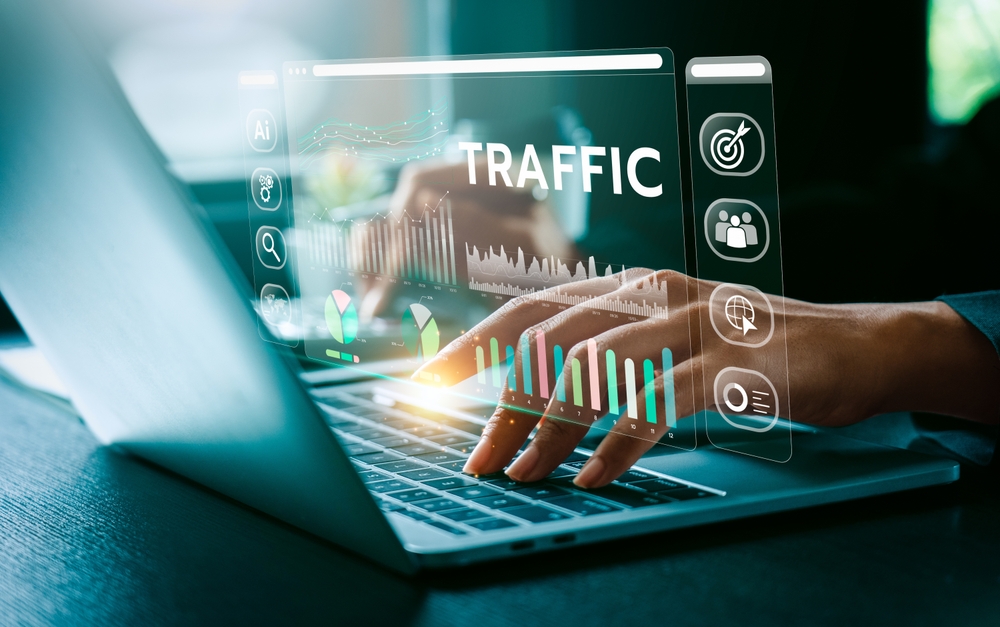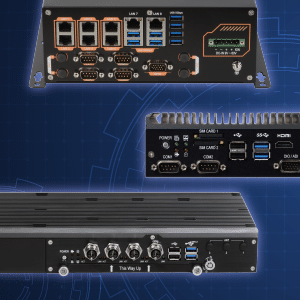Transforming Traffic Management with Edge AI: A Smarter Approach to Smart Cities

Population density and vehicle numbers are straining conventional urban traffic control systems. AI has influenced city traffic management with predictive modeling, dynamic signal changes, and adaptive routing. Meanwhile, edge AI processes data locally at intersections and vehicles. It enables real-time, efficient, and scalable decision-making while limiting latency and network reliance. Here, let’s explore how edge AI becomes a smarter approach for traffic control.
Challenges in Traditional Traffic Management
- Congestion and Delays: Traditional traffic management uses static signal timing. It ignores real-time traffic volume and patterns. As a result, intersections become bottlenecks during unexpected surges. Moreover, the absence of adaptive systems precludes optimized routing and compounds delays during peak hours or incidents.
- Traffic Violations: Monitoring violations in traditional traffic management counts on manual enforcement or limited automated tools. It creates blind spots in high-density or remote areas. Identifying violation patterns or adjusting enforcement methodologies becomes nearly impossible without real-time analytics or connected systems.
- Environmental Impact: Old systems don’t monitor emissions or promote cleaner transit. Long idling from outdated signal algorithms escalates CO2 and NO2 levels. Worse, such systems cannot adjust to air quality for unchecked pollution hotspots.
- Data and Cost Issues: Legacy traffic management systems usually centralize data processing. So, it increases latency during critical decision-making. It limits scalability and raises active costs. Furthermore, the absence of decentralized or edge computing solutions affect data privacy. No doubt, it is a concern in urban mobility networks.
How Smart Traffic Works with AI
Smart traffic with AI integrates convolutional neural networks (CNNs) for real-time vehicle detection. It optimizes traffic signals using Webster’s formula for lower congestion by up to 50%. For example, systems like YOLO V5 detect vehicles with a mean average precision (MAP) of 0.88. At the same time, RNN-LSTM models predict 12-hour traffic trends with an MSE of 4.52.
Predictive analytics preemptively adjusts signal cycles to cut vehicle delays by 70%. Air quality and noise are monitored at intersections using IoT sensors. They use AI to correlate traffic density with emissions for adaptive measures. Moreover, AI automates violation detection. It identifies red-light running or speeding within milliseconds to lower enforcement gaps.
The Role of Edge AI in Smart Traffic Management

Low Latency and Real-Time Processing
Edge AI in smart traffic management processes data on devices and bypasses cloud dependencies. It enables near-instant response times to detect red-light running or speeding. For instance, edge devices with NVIDIA Jetson modules can process 30 frames per second. It gives immediate flagging of infractions. Real-time feedback loops can also adjust traffic signals dynamically. As a result, they help decrease congestion by up to 20% in pilot projects.
Data Privacy and Security
Edge AI in smart traffic management handles sensitive data locally. Hence, no raw video streams leave the device. It lowers attack surfaces. For example, traffic infringement data, including license plate captures, are encrypted and retained for only legally mandated periods. It backs GDPR compliance, safeguards citizens’ privacy, and maintains operational uprightness.
Cost Efficiency
Edge AI in smart traffic management lowers reliance on centralized cloud systems and bandwidth usage by up to 80-84%. Processing on-site decreases costs of server infrastructure. For example, a single cloud-based TMS intersection setup could cost above $5,000 annually in cloud expenses. Nonetheless, edge-based systems reduce. Edge AI devices consume the least power. Even many run on only a few watts to further diminish operational costs.
Scalability
Edge AI in smart traffic management supports a decentralized framework. It empowers scaling across intersections. Each edge device functions for no single point of failure. E.g., a city’s smart traffic network may include over 1,000 edge-enabled cameras that can manage data everyday without network congestion. It smoothes operations during peak traffic or system upgrades.
SINTRONES’ Edge AI Solution for Traffic Management
Key Features of SINTRONES’s Edge AI Solution for Traffic Management
Our edge AI solution uses the NVIDIA Jetson AGX Orin and delivers up to 275 TOPS of AI performance. It permits real-time processing of complex neural networks and computer vision algorithms for traffic management systems. We integrate multiple PoE cameras for exhaustive traffic monitoring and analysis. Our systems, including the IBOX-650P-IP66, are IP66-rated for durability in outdoor environments and reliable operations across a temperature range.
Addressing Traffic Challenges with Edge AI
Our edge AI solutions improve traffic flow while analyzing real-time data and making adjustments. For instance, intelligent traffic lights can reduce delays by up to 40% by responding to current traffic conditions. Additionally, our systems detect and record traffic violations for greater enforcement efficiency. The rugged design guarantees 24/7 reliability in punitive weather conditions. It helps preserve performance for critical traffic management tasks.
Real-World Applications
- Smart Traffic Signals: Signal adjustments employ edge AI to process real-time data from connected vehicles and IoT sensors. It permits immediate recalibration of green-light durations according to congestion levels. What is more, processing data locally cuts latency for instant responses to heighten city traffic management.
- Urban Mobility Hubs: Edge AI boosts traffic flow near dense transit areas while analyzing vehicle and pedestrian patterns. It predicts peak loads and reconfigures entry/exit lanes. Consequently, disruptions around airports, train stations, and bus terminals are decreased for greater city traffic management efficiency.
- Pedestrian Safety Zones: Edge AI lets camera systems detect pedestrians and calculate vehicle stopping distances in school zones and crosswalks in real-time. After that, alerts are triggered locally to lower delays from cloud communication. It augments city traffic management while prioritizing vulnerable users without hindering traffic flow.
- Highway Monitoring: Edge AI in highway management detects accidents or stalled vehicles through immediate video analytics. It empowers faster lane reallocation and rerouting. Apart from that, it integrates vehicle tracking data with predictive algorithms to foresee congestion hotspots. It uplifts city traffic management precision at a macro scale.
The Future of Smart City Traffic Management
The future of smart city traffic management counts on AI and edge AI’s optimizing real-time traffic flow with near-zero latency. For instance, deploying edge-based AI systems at intersections can lower latency than cloud-reliant architectures. It prompts dynamic traffic signal adjustments to curtail congestion. Also, autonomous traffic systems with V2X communication can predict traffic patterns using high-resolution data from LiDAR-equipped infrastructure.
Further, connected vehicle technologies, including 5G-enabled platooning, could cut fuel consumption with better road capacity. Predictive analytics for fleet routing and emergency vehicle prioritization will also update smart city traffic management’s efficiency.
Embracing Smarter Solutions for Traffic Management
City traffic management needs real-time data processing. Our NVIDIA Jetson AGX Orin-powered IBOX-650P-IP66 can make speedy signaling optimization and obstacle detection decisions with up to 275 TOPS of AI performance. Its IP66-rated fanless design ensures durability in severe settings.
Want to see how Edge AI can enhance traffic management? Learn more about our solution here.




